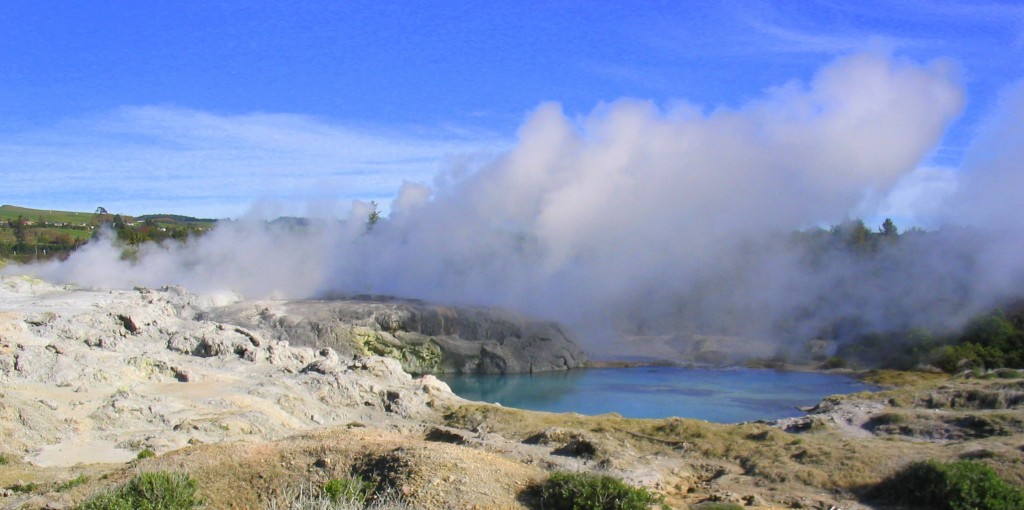Types of geothermal energy
Geothermal heating obtains energy from high temperature hot rocks underneath the ground, mainly in geologically unstable areas of the world. However, geothermal heat pumps can also be used to get energy from the earth when the rocks are not at high temperature. In some communities, water heated by hot rocks is present in pools at the earth’s surface and locals can cook their food by putting it into these.
How does it work?
Water is pumped down drill holes to hot rocks below the earth’s surface in geothermal power stations. The water heats up as it passes over the rocks turns into steam when it is brought back up to the surface. This steam drives turbines and generates electricity.
Geothermal heat pumps work using heat exchangers. They take heat from the soil and rocks in the ground and use it to heat the house. They can also work in reverse to provide air-conditioning.

Thermal energy stored deep in the earth can be harnessed and used as a clean, sustainable energy source. The energy escapes as steam, and this can be used to generate electricity.
Cost and efficiency
Geothermal power stations are expensive to build although once they are operational, the fuel is free. Geothermal heat pumps deliver a lot more heat than the electricity that goes in to run them.
Size
Geothermal installations do not take up too much room and much of it is underground. However, very deep holes often have to be drilled.
Locations around the world
Geothermal power stations are located in places like Iceland, Japan, The Philippines, Italy and New Zealand. Geothermal heat pumps can be installed anywhere suitable. Southampton in the UK uses geothermal heat pumps to provide its inhabitants with hot water.
Good news
Once the power station is built, or the heat pump installed, you do not need to use much energy to run them.
Bad news
Geothermal power can not be used everywhere. The geology of the rocks and the ease of getting to the hot rocks are all very important considerations. Sometimes, good geothermal sites become inactive for a period of time and could be unreliable. Also, along with heat, other things can be brought up to the earth’s surface like toxic metals and pollutant gases, although they are not as polluting as those produced from fossil fuel power stations. Geothermal heat pumps, however, are much more versatile.
Energy storage
The energy is stored as heat in the rocks but it may run out if it is used too quickly or geological activity stops.
Environmental impact
Toxic chemicals and gases coming from geothermal power stations have to be disposed of responsibly to stop them polluting the environment. The holes that need to be drilled are often very deep. Sometimes the building of the plant may affect the stability of the land and the pumping can cause small earthquakes.
Human impact
You may have to have your garden dug up in order to install geothermal heat pumps in the ground.
Is it a viable power source for the UK?
In the UK, there are very few places that can use geothermal heating and only then using heat pumps from the ground as we have few geologically active locations that could produce the hot steam to drive turbines.


